Planning to be in the path of totality for the next solar eclipse? Here are 10 tips for an easier, more enjoyable viewing experience.
By: Alisha Trenalone
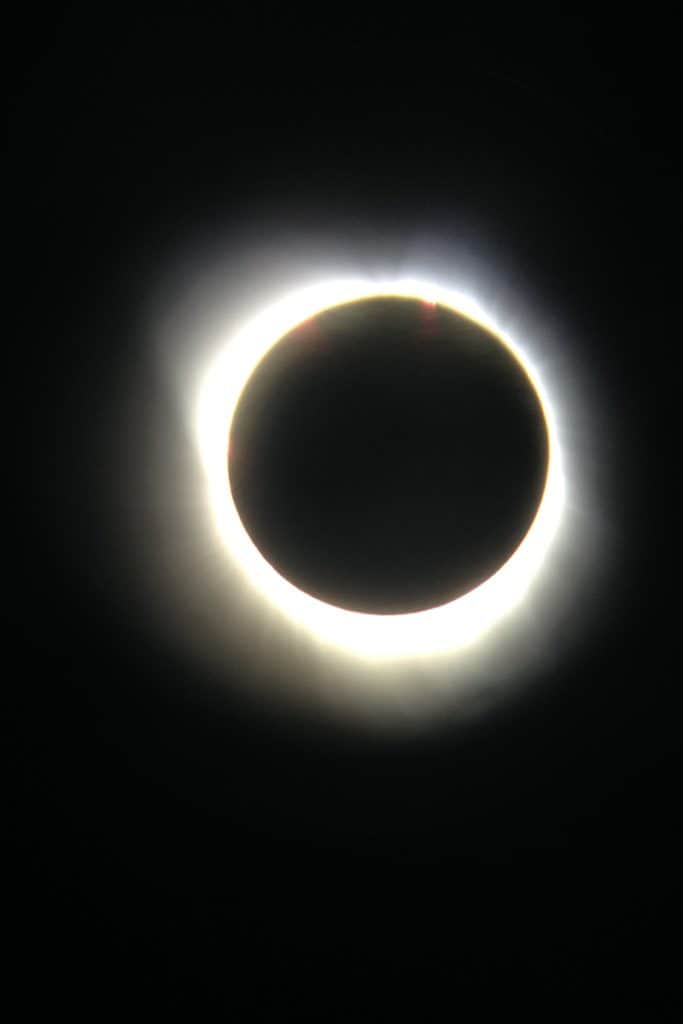
In August 2017, my family and I became first-time eclipse chasers.
We traveled several hours to see two and a half minutes of something miraculous.
The experience was a true phenomenon that we're eager to repeat. I even learned some things that will make the next time easier and more fun.
Are you considering traveling to the path of totality for a solar eclipse? Here are some thoughts on why it's worth it, as well as 10 tips for the smoothest experience possible.
Why Travel to the Path of Totality?
A total solar eclipse has a completely different feel to a partial one.
During a partial solar eclipse, most people won't notice much happening. If your location sees 90 percent or more of the sun being blocked, you'll get a moderate dimming of ambient light. That's about it.
That's why, when I start talking about eclipses, I often meet with polite but blank looks. When you've only experienced the ho-hum version, it's hard to imagine what totality feels like.
But equating a partial eclipse with totality is a bit like merely seeing a road sign for the Grand Canyon and saying, "Well, that wasn't too exciting; we may as well go home now." Keep going, trust me!
Here's my best description of the moment:
One second, it's all glare and light — although it's a muted, tan light that's starting to grow murky. Then for a few seconds you feel the moon's shadow speeding across the landscape toward you, and suddenly, the sky morphs into a shade of deep purple blueness you've never seen before; the horizon is instantly as pink as a sunset in 360 degrees. And you can safely pull off the filtered glasses and glue your eyes to the gaping black hole in the sky. The view is now so alien you almost wonder, "What planet am I on?"
The light coming off the eclipsed sun is not diffuse and hazy as in photos. It's neat and narrow, almost dainty in its precision. Pointed streamers of light jut off the disc in different directions, twinkling and lengthening infinitely further than you had imagined they would.
The crowd is hushed, and you feel a visceral sense of awe and stillness, so much so that even breathing feels like a distraction. Your senses become hyper-alert, trying to commit to memory every sound, sight, and feeling, and yet all too aware that you will forget much of it.
After a few minutes that feel both endless and fleeting, little flickers on the edge of the moon burst forth to make a diamond ring — dynamic beads concentrated in brilliant unity for split seconds, and then — everything returns.
Here are the things I learned from the 2017 eclipse that can help with planning for the next one. I hope you get to go!
1. Obtain Eclipse Glasses Early
Do you remember the eclipse glasses shortage of 2017? I do! For a brief space in time, these flimsy little viewers were practically the stuff of black markets.

Eclipse glasses are the easiest way to look at the sun before totality hits. So buy early! This list from the American Astronomical Society can help you confirm that what you're buying is authentic and safe.
2. For a Closer View, Get the Right Gear
Want to use a telescope or binoculars to look at the sun during a solar eclipse? You just need a proper solar filter.
We like a telescope with an equatorial mount, like this Celestron telescope. (It makes it easier to track objects as the earth rotates.)
Be absolutely sure to add a solar filter sheet across the lens before trying to observe the sun. We placed ours inside a cap that snapped snugly on the end of the telescope, but you can also tape it around the end, or use a rubber band.
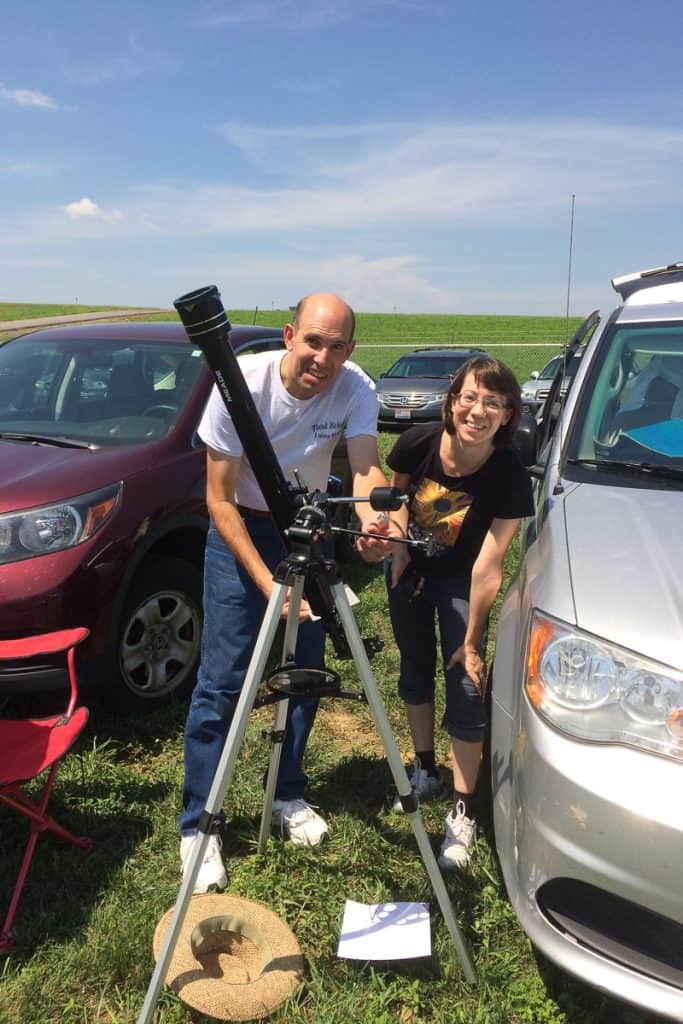
3. Prepare Well If You're Taking Photos in the Path of Totality
Even if you don't have professional camera equipment, you can still get excellent eclipse photos or video using a smartphone telescope mount. This was our choice in 2017.
Practice is a must. Take your telescope out on a clear day, make sure the solar filter is in place, and attach your smartphone to the eyepiece via the adjustable mount. Try taking some photos or a short video.
This allows you to get a feel for the rotational movement as the minutes go by, as well as allowing you to double-check where to place all your gear.

When the day finally arrives, allow plenty of time for telescope and camera setup. Take photos throughout the early phases of the eclipse to make sure everything is working the way you want.
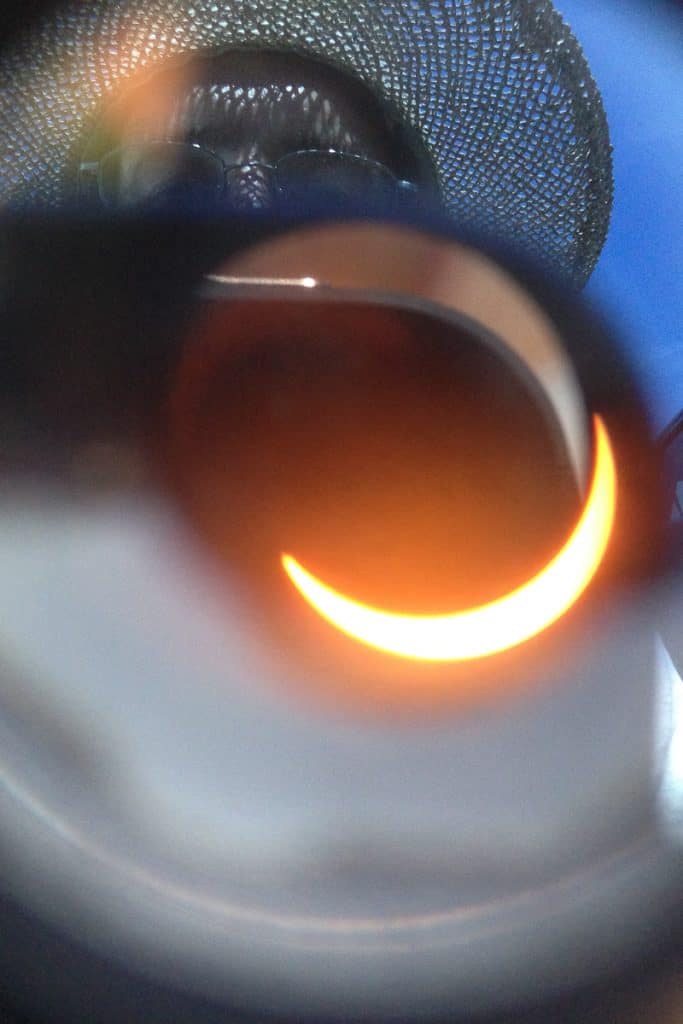
Once totality actually hits (but not before!) you'll remove the solar filter and start capturing those classic eclipse pics.
All of that said, I also encourage you to...
4. Consider Not Taking Photos
Why consider not taking photos in the path of totality? Because no photo I've ever seen represents it accurately. Even the best photos would have you believe that an eclipse is mostly a black-and-white event, but this isn't true.
The unique color of the sky and the quality of the light streaming from the corona are things that can really only be processed by the human eye.
I'm thrilled we experimented with photos during the 2017 eclipse, but now that I know the difference between the photos and the reality, I'm seriously considering eliminating that project next time.
Instead, I might limit myself to photos of my family enjoying the day, but perhaps allow those unrepeatable few minutes of the eclipse to just be between me and the sky.
5. Pick the Right Viewing Spot
In 2017, Hopkinsville, Kentucky, was the point of greatest eclipse, and enthusiasts converged on the city in massive numbers. It was a madhouse. There was a little green men festival and everything.
If a highly publicized viewing area like that sounds fun, go for it!
I knew I wanted to enjoy the eclipse around a crowd of people, because there's nothing like a communal sense of awe — but I was looking for something more moderate-sized.
With a little research, I found a tiny local airport in the path of totality. They were hosting a low-key event, and it was just perfect. There were bathrooms, some food, and plenty of parking in an open field. We even had fun watching people fly their small planes in for the eclipse.
It's the kind of thing I'll be searching out for the 2024 eclipse.
6. Arrive Early Within the Path of Totality
Though totality only lasts a few minutes, part of the excitement of the day is watching the whole progression of the eclipse.
The moment of "first contact," when the moon's shadow can be observed hovering on the edge of the sun, is pretty neat too. This occurs well over an hour before totality.

So try to be established in the viewing spot you've chosen well before "first contact."
7. Pack Along Plenty of Food + Drink
Especially if you're in an area that's crowded, or where traffic might become a problem, have along plenty of snacks (or even a meal) and water.
Bringing these items with you means one less distraction from the main event.
Here are a few suggestions for easy, non-perishable camping type food!
8. Keep a Close Eye on the Timing
Space agencies such as NASA publish incredibly specific timelines for eclipses.
Have those details well in mind so that time doesn't get away from you, especially if you do need to leave your spot for a bathroom or food.
9. When Totality Starts, Enjoy the Moment
Once that "wham!" moment starts where the moon is fully blocking the sun, try to be as focused as you can! You won't want to be fiddling with telescope or camera adjustments.
The moments of totality are all too short. And even if you get to see another total eclipse some day, this is your only time seeing this one. Enjoy.
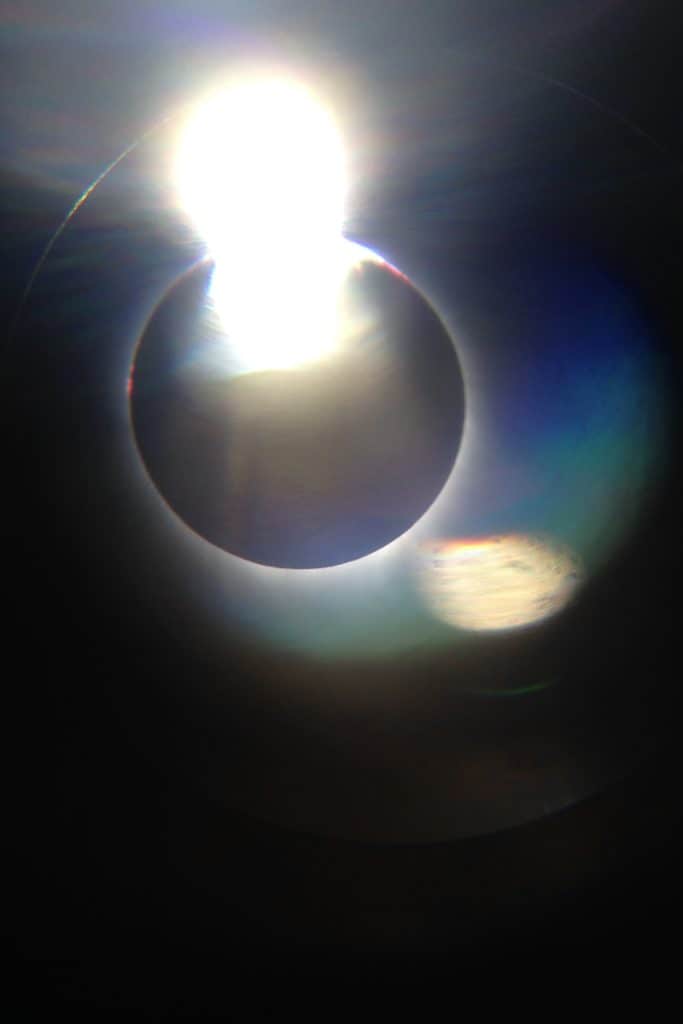
10. Have a Game Plan For Exiting the Path of Totality
Traffic after an eclipse is much worse than before. Why? Because everyone has taken their own sweet time arriving over the course of the preceding days and hours. But as soon as the show's over, people want to leave right away. Roads can get hopelessly backed up.
For the 2017 eclipse, we decided to wait out the traffic by stopping for dinner at a convenient restaurant. Traffic was (slightly) better by the time we finished eating, but still not great.
If you have far to drive and you have the flexibility of staying overnight, reserving a hotel room nearby might help to ease stress. (Demand may be high, so book early!)
Alternatively, you could search for a campground located within the path of totality. Then you could just relax and stay put until things ease up the next day.
Have you already witnessed a total solar eclipse? Leave your thoughts and tips in the comments below!
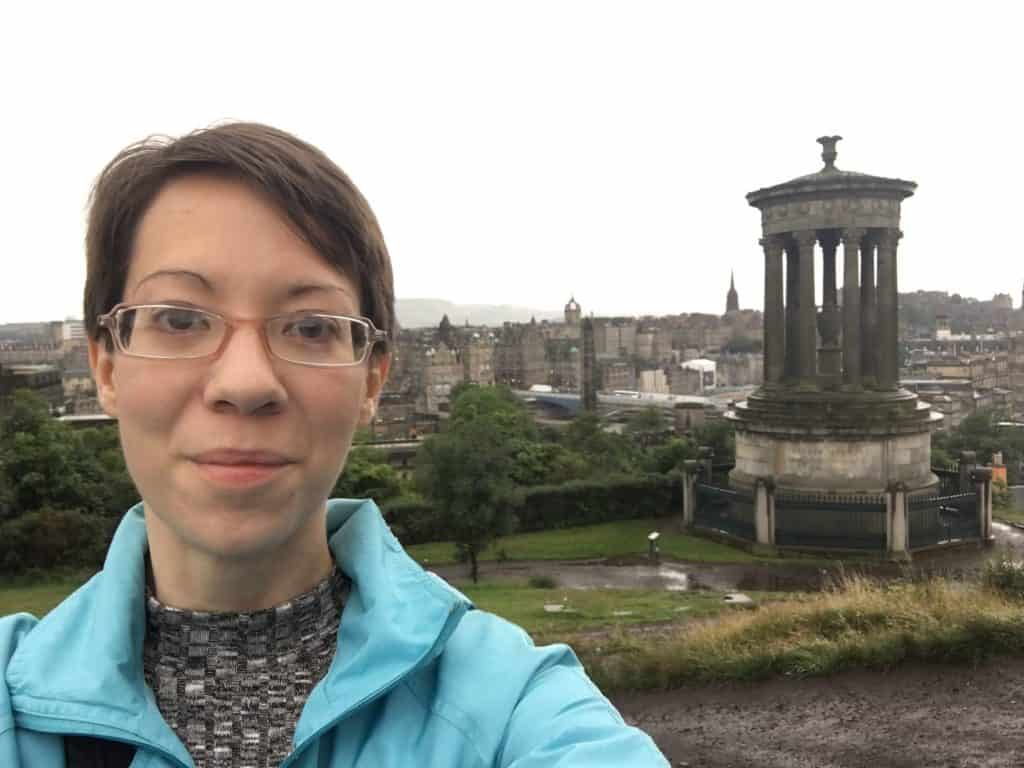
About Alisha Trenalone
I’m Alisha and I live in eastern Kentucky. Discovering good food is one of my joys in life, but you will also find me doing lots of reading and dreaming of travel. Having worked at a local newspaper for several years, I’m avidly interested in the written word and the art of sharing stories. Now I help Sarah out in various ways here at Champagne Tastes!


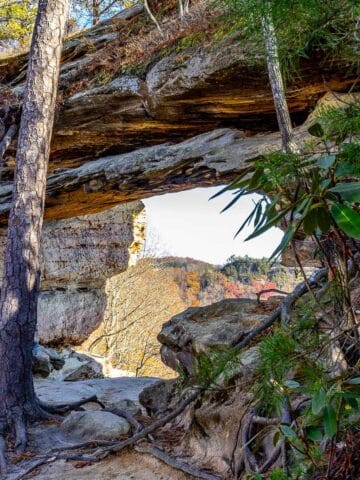
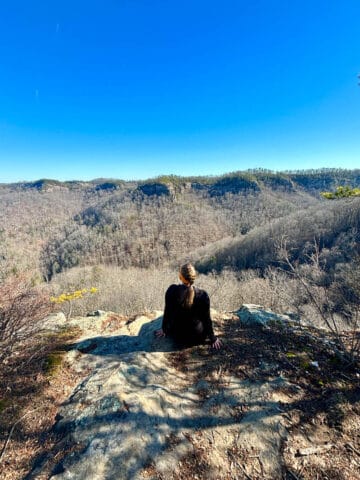
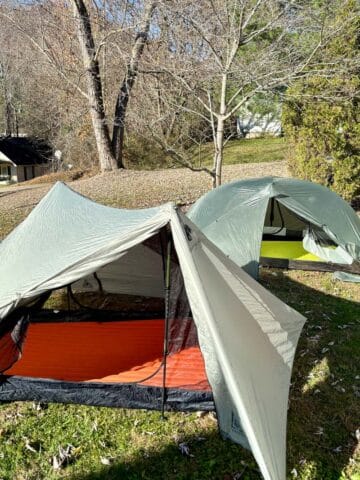
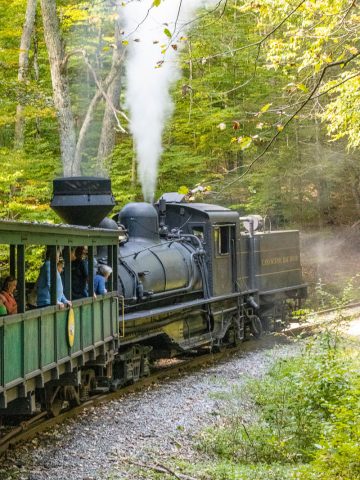
Leave a Comment: